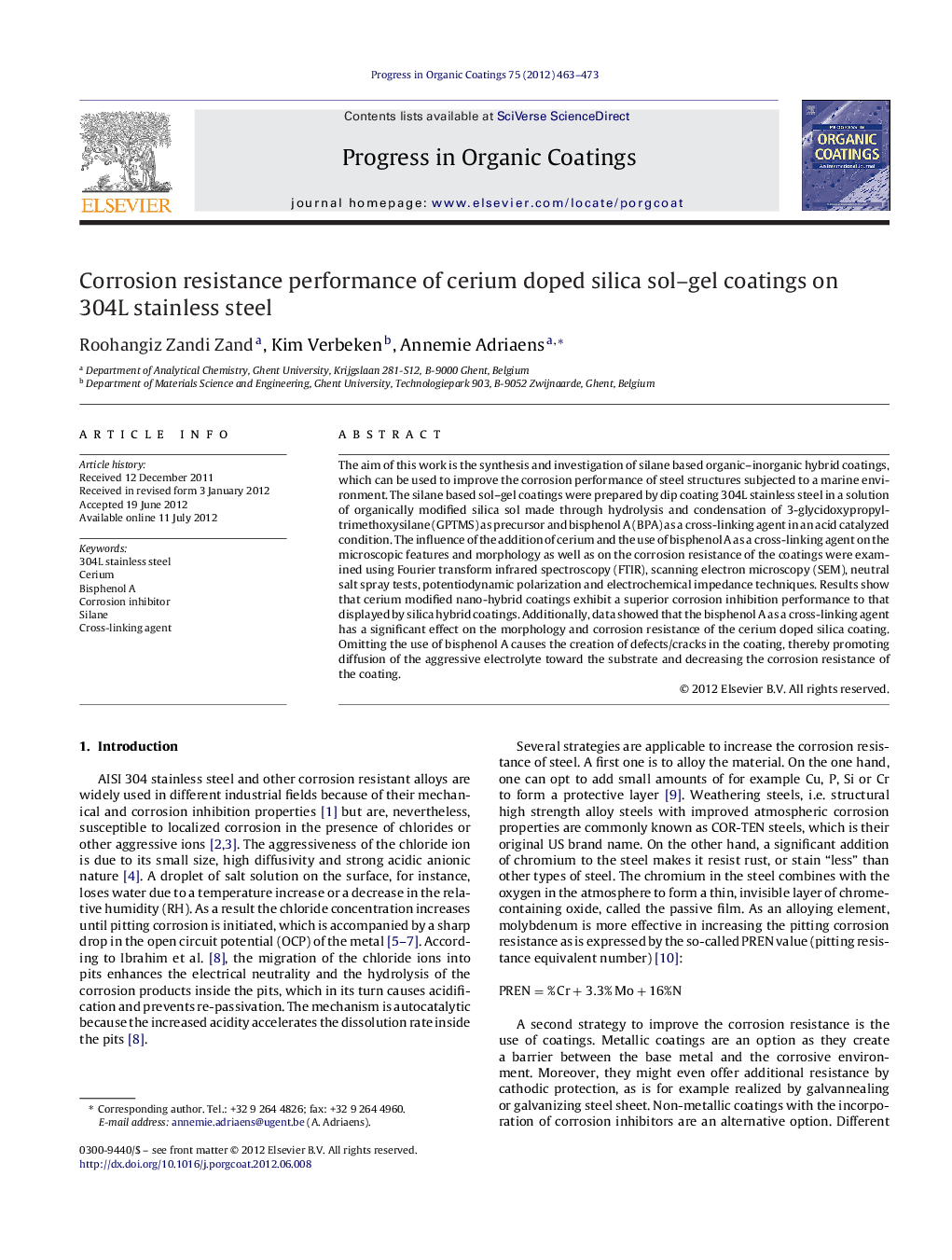| Article ID | Journal | Published Year | Pages | File Type |
|---|---|---|---|---|
| 692953 | Progress in Organic Coatings | 2012 | 11 Pages |
The aim of this work is the synthesis and investigation of silane based organic–inorganic hybrid coatings, which can be used to improve the corrosion performance of steel structures subjected to a marine environment. The silane based sol–gel coatings were prepared by dip coating 304L stainless steel in a solution of organically modified silica sol made through hydrolysis and condensation of 3-glycidoxypropyl-trimethoxysilane (GPTMS) as precursor and bisphenol A (BPA) as a cross-linking agent in an acid catalyzed condition. The influence of the addition of cerium and the use of bisphenol A as a cross-linking agent on the microscopic features and morphology as well as on the corrosion resistance of the coatings were examined using Fourier transform infrared spectroscopy (FTIR), scanning electron microscopy (SEM), neutral salt spray tests, potentiodynamic polarization and electrochemical impedance techniques. Results show that cerium modified nano-hybrid coatings exhibit a superior corrosion inhibition performance to that displayed by silica hybrid coatings. Additionally, data showed that the bisphenol A as a cross-linking agent has a significant effect on the morphology and corrosion resistance of the cerium doped silica coating. Omitting the use of bisphenol A causes the creation of defects/cracks in the coating, thereby promoting diffusion of the aggressive electrolyte toward the substrate and decreasing the corrosion resistance of the coating.
► Synthesis of silica based hybrid organic–inorganic coatings as corrosion inhibitor. ► The presence of cerium improves the corrosion protection properties of the coating. ► Omitting the use of bisphenol A causes the creation of defects/cracks in the coating.
